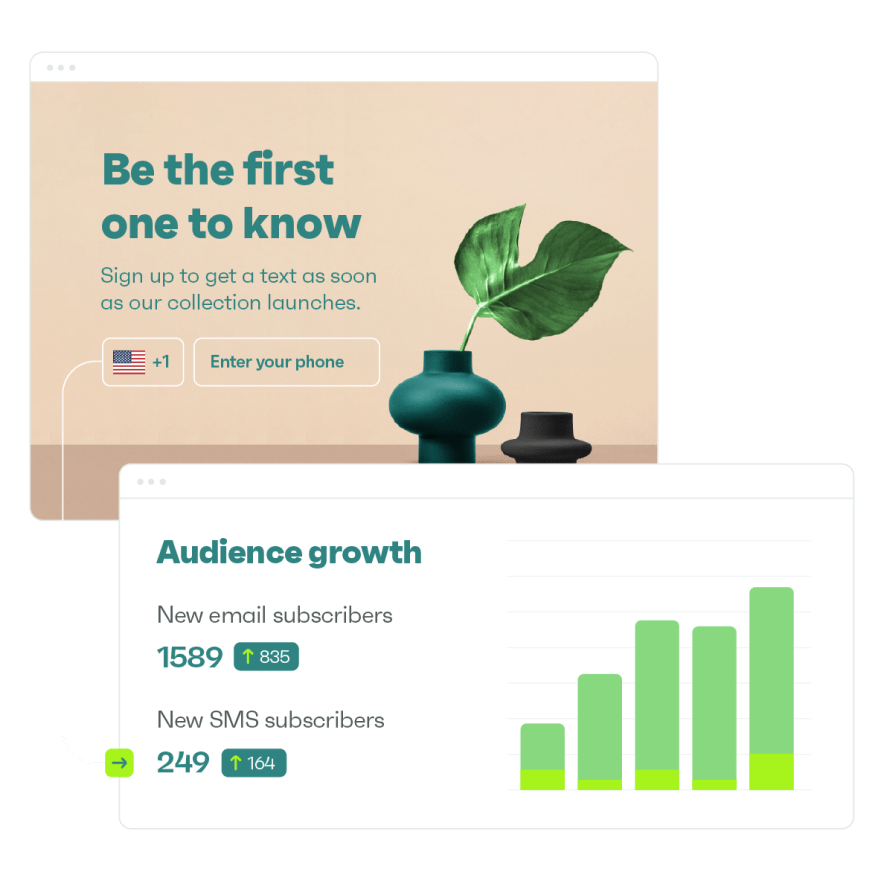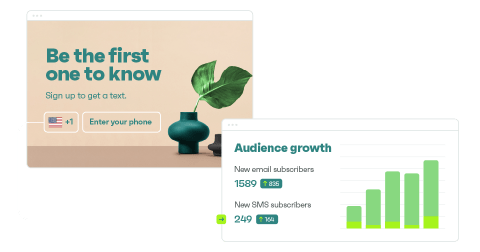Drive sales on autopilot with ecommerce-focused features
See FeaturesHow to Give Best-in-Class Omnichannel Customer Support
When your customers make a purchase, they’re thinking about getting the product and not about things like customer support. But the reality is that sometimes the situation doesn’t turn out the way they’d hoped, planned, or expected.
When that time comes, the customer will look to contact the company—and that’s where you need to use an omnichannel approach to your advantage. The challenge for ecommerce businesses is the average customer uses ten different channels, including contact forms, social media profiles, live chat, and email—making it hard for companies to know where to focus their efforts. However, providing exceptional customer service isn’t about the number of channels but the quality of customer service across them —and omnichannel customer support can help do that.
Learn how to make your touchpoints consistent, well-designed, and connected to provide a completely seamless experience. In this article, you’ll find out about creating synergy between your communication channels and introducing an omnichannel strategy to your customer support.
What is Omnichannel Support?
Omnichannel customer service is integrating communication touchpoints, such as email, text, instant messaging, social media, video, and other digital solutions, to provide a unified customer service experience.
For example, customers can write to you on Facebook and continue the conversation through an email or a video call with all of the context and information included from previous channels.
You can have dedicated teams for each one of them, but remember to properly prepare your agents for customer interaction. Your teams must have the same level of knowledge to reduce the risk of information overload or other mistakes. This way, your customers always get accurate answers.
What’s more, an omnichannel support strategy focuses on customer behavior and measuring customer satisfaction when using your services. Companies applying this strategy experience 23x higher customer satisfaction rates. Needless to say, the more satisfied the customer is, the greater the chance that they will come back to you.
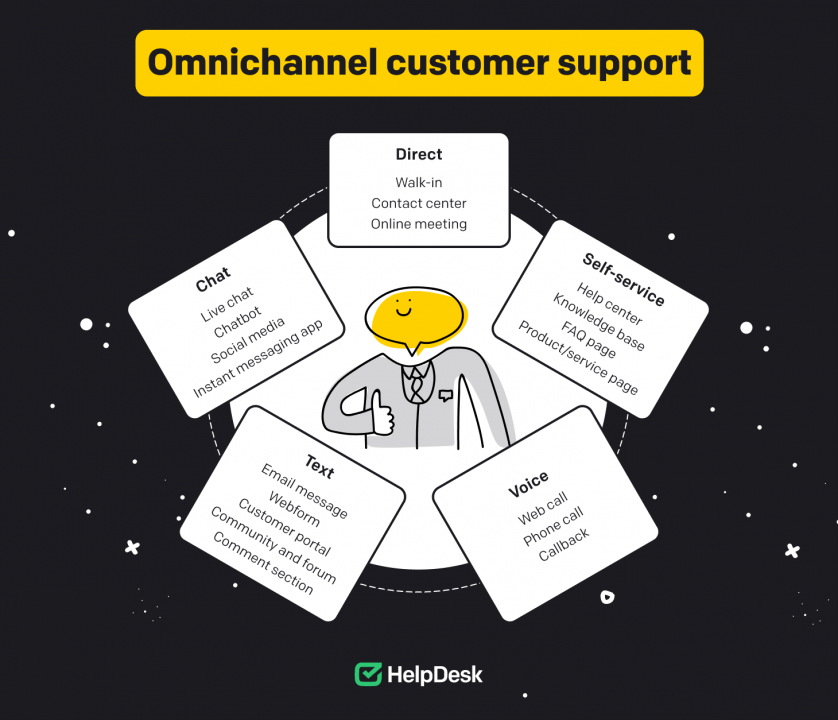
Benefits of Omnichannel Customer Support
Proper implementation of an omnichannel customer support strategy has a significant impact on a company’s revenue and can bring with it other benefits and advantages, including:
- Faster resolution of customer cases.
- Reducing agents’ time handling customer requests.
- Higher customer satisfaction rates.
- Improved customer retention.
- Providing a user-friendly experience.
- Higher long-term customer engagement and brand trust.
- Better customer expectation management and needs assessment.
Also, polished interactions in all communication channels are the foundation for an excellent customer experience. A study conducted by Walker, an experience management company, shows that by the end of 2020, customer experience will overtake price and product as the key brand differentiator. These customers are at different stages of their journey, and you can follow them from the point of interest to the point of fulfillment using the omnichannel support strategy.
How to Start with Omnichannel Support
Since there are many different types of companies, the development of an omnichannel strategy is an individual issue. However, there are universal principles that can be applied to your business.
Creating the right SOPs and documentation is at the core of superior customer support. It provides the background and creates the context necessary for support agents to have a deep understanding of the customer’s case. With always up-to-date documentation, agents can follow best practices and give the most suitable solution to the customer.
Think about using a content management system and provide governance for your omnichannel resources. Look at your customer support stack and verify whether these tools can be fully integrated. It’s much easier if you pick them from one provider to avoid problems with integration or compatibility.
Fine-tune your support channels to meet your customers’ expectations and increase conversion. Using tracking pixels, tracking software, domain-side tracking, and CRM plugins to collect customer data, you can use it to segment users, foresee your customers’ needs and struggles, and enable highly efficient conversations.
The Top Channels for Omnichannel Customer Support
Your customers will appreciate the wide range of support options available and will choose a communication channel based on their preferences.
The channels I talk about below are perfect for starting an omnichannel customer support strategy.
1.Live chat for priority requests
Have you ever noticed that small, shiny bubble in the bottom right-hand corner of a web page? In most cases, when you click on it, you’ll see a live chat window pop up so that you can talk to an agent in real-time. Live chat software can be easily added to your website, online store, or other application.
The most significant reasons why 42% of customers choose this channel are convenience and short wait times. The average wait time to access a chat session is 46 seconds. That’s really impressive.
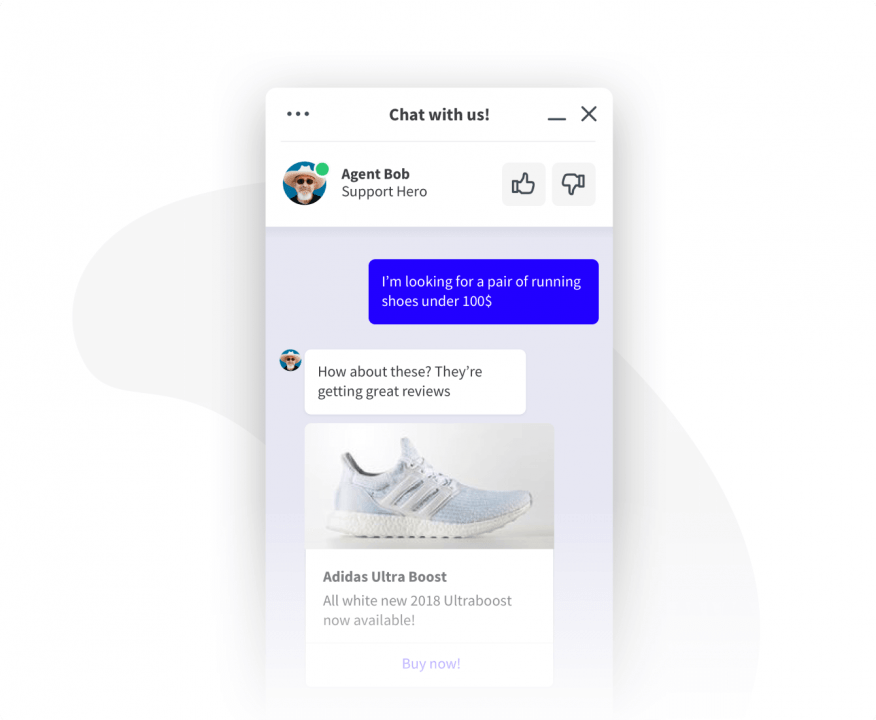
Companies mainly provide live chat assistance for priority customer requests. You’ve probably met the type of customer who wants answers immediately. Your agents can use canned responses and handy links to provide a quick response. Because of that, live chat solutions can reduce the bounce rate and increase customer satisfaction.
You should try to combine live chat with your CRM system. This way you can gather relevant data about your customer and refer to it to gain context before the next interaction. Also, you can use this data for the upselling and cross-selling of your products or services.
2. Chatbot for AI-assisted tips
Data shows that around 42% of B2C companies use a chatbot on their websites, and 89% of decision-makers feel they allow for more personalized interactions and customer support.
An AI-driven chatbot is an “employee” who can work tirelessly and has the ability to offer 24-hour service. That’s why it’s so eagerly chosen across a variety of industries such as online retail (34%), healthcare (27%), banking (20%), insurance (15%), and government (10%). Thanks to the chatbot’s proactivity the company can count on the immediate reaction in case any support is needed. AI and machine learning use experience to automatically improve performance and provide the best results.
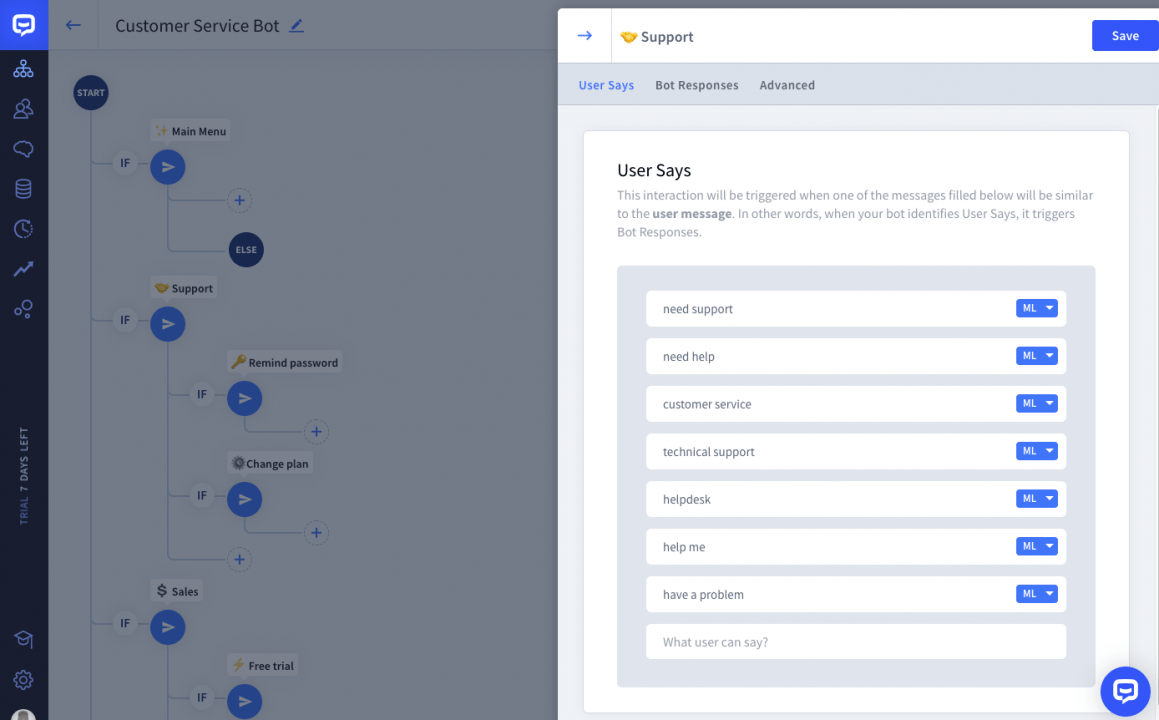
Although chatbot is an advanced solution, its installation is not as difficult as it might seem. There are many chatbot templates available, and the chatbot visual builders themselves are very intuitive. So, with just a moment of configuration, your custom chatbot can be ready to answer 80% of your customers’ standard questions.
3. Self-service for proactive customers
Among your customers, you’ll find those who wish to be independent and want to solve their problems quickly and easily. Serving self-sufficient customers is critical because they bring with them a better cost-to-profit ratio—after all, they’re the ones that will cost you the least amount of money and time. So, make it easy for them to find the help they expect and need.
These customers look for solutions to address their needs, such as a knowledge base, an FAQ page, ”Delivery and Returns” section, help center documentation, and support videos. By providing this content in a comprehensive, organized, and easy to navigate manner, your self-service customers will appreciate the valuable and reliable information you provide.
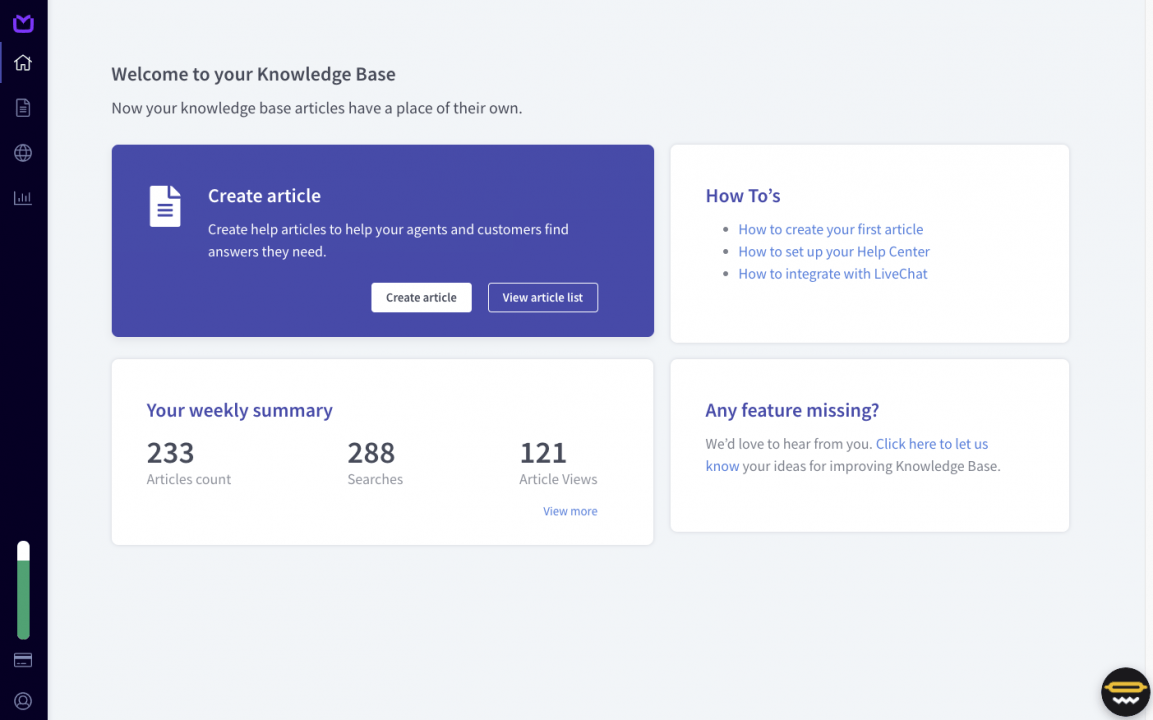
Crating self-service content is not enough. Be sure to perform A/B tests for your support resources. This is a tried and tested practice that optimizes support materials for ease of use, relevance, and user-friendly design. Audit your self-service resources and prepare them to be useful for your visitors. When you do this, you can expect a better customer experience, which translates into higher satisfaction rates.
4. Social Media for the Biggest Online Enthusiasts
Social media can be a superior tool for customer service, and I’m not just talking about Twitter and Facebook. There are countless social media platforms where customers can express their opinions and ask questions. The challenge for your support team is to monitor them and use social listening to provide excellent assistance at the very end.
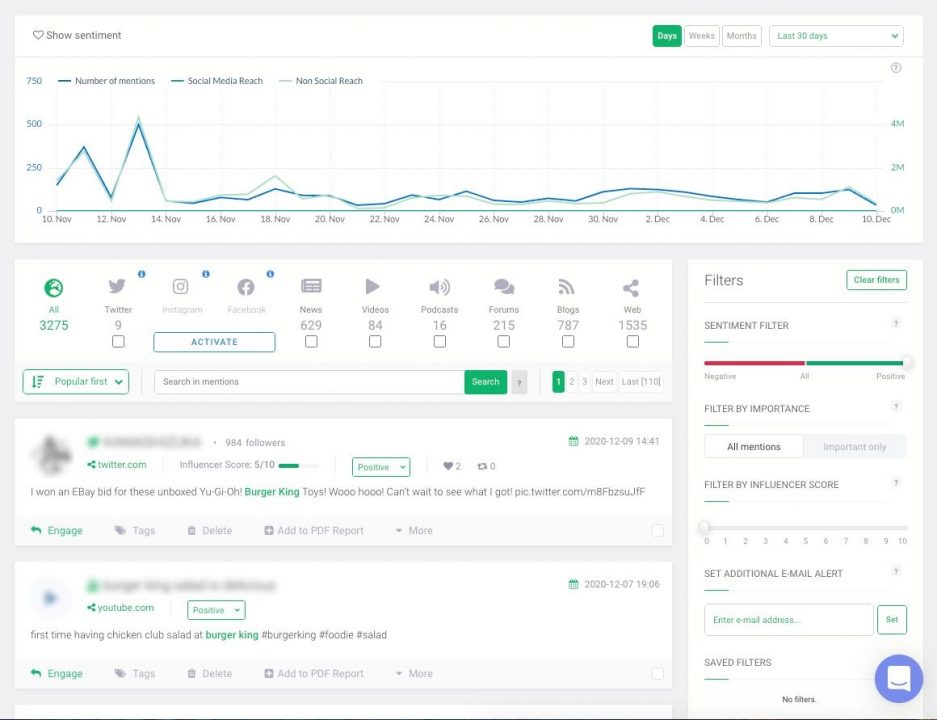
You can learn a lot more about your customers if you spend time online in the same places they do. When you spot a new post, you can predict their needs and then address their concerns.
Customers who complain on social media expect a quick response. If possible, try to answer all questions within the first hour. A quick reaction to social media messages increases a customer’s willingness to spend money and enhances customer advocacy by up to 25%.
So, shorten your response times on social media, and train your support team to know how to acknowledge the customer question and deliver the optimal solution. Invest in keyword tracking software for your social media channels so you won’t miss a thing. All of this will lead you to higher customer satisfaction and better relationships.
5. Email for Supporters of Reliable Solutions
Email is considered to be a secure and universal solution that customers trust. More than 50% of customers prefer to contact companies through digital media, such as email or social media.
Most often, businesses are afraid of too many customer emails at one time including bounced emails and spam. But, you can arrange everything with help desk software.
With this type of software, your customers’ support questions are converted into tickets. Then, you can set priorities, statuses, tags, and assign teams.
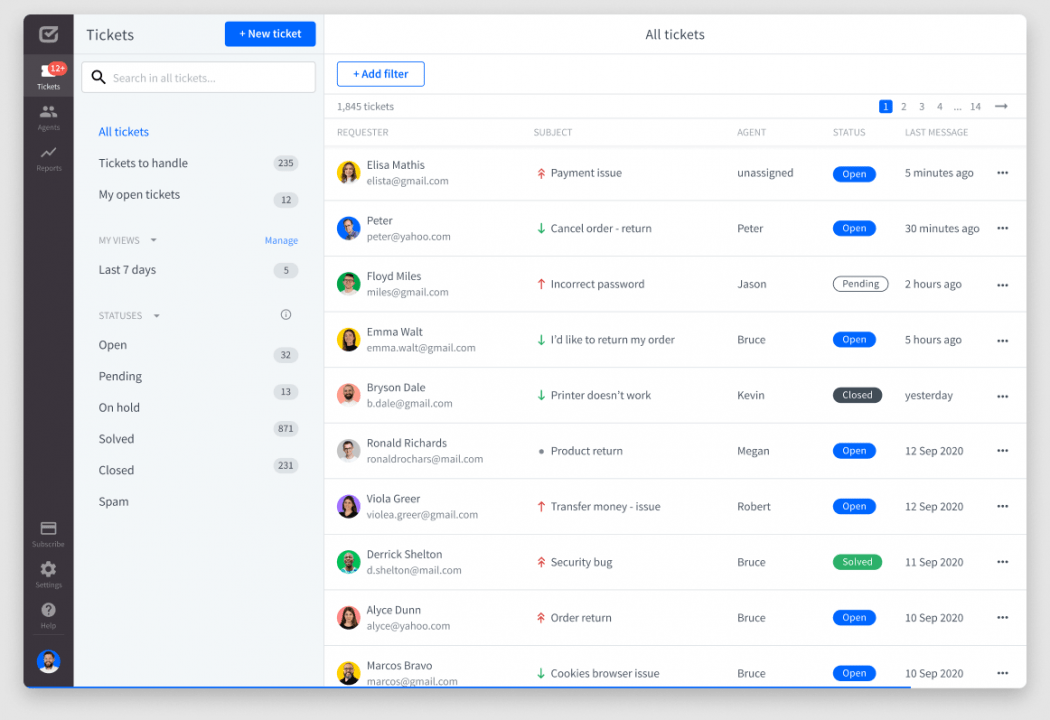
You have one place for each conversation with contextual details from all your channels, allowing you to manage emails, live chat, contact forms, and social media messages from one dashboard. Your support agents will be much more efficient because they can work on customers’ requests and see previous details of any interaction that has taken place.
In such help desk software, you can create automated workflows to save time, automatically organize emails, or route them to the right agent. Your customers will immediately receive a message with the order status, product availability, or the return form. All this happens without your effort once the workflow is set up properly. When you send the last email and solve the customer case, remember to send the customer satisfaction survey to help determine what your customer’s experience was like.
Wrap up: Best-in-Class Omnichannel Customer Support
Your customers are always on the go, and they expect you to keep up and always be available to help. The omnichannel approach can take your customer support efforts to the next level by closing the gap between on-site and off-site channel experiences. Start right now, and use integrated communication channels for acknowledging and understanding your customers’ needs.
quick links
related features
No fluff, no spam, no corporate filler. Just a friendly letter, twice a month.
